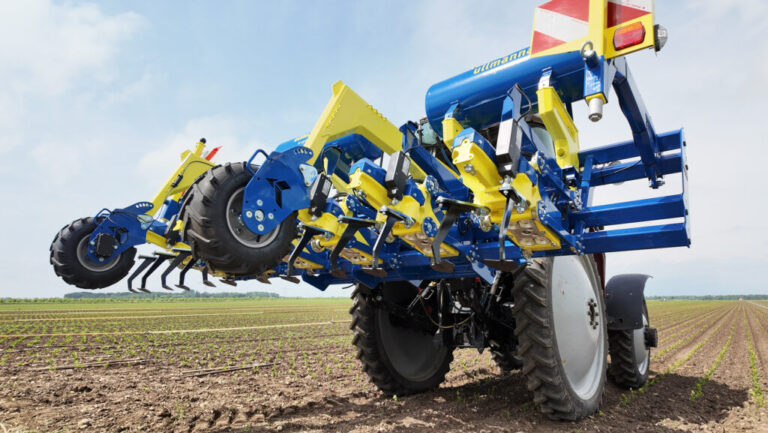A hoe that tackles weeds across a wide range of sizes both between and within rows uses rapid image analysis to detect and target the offending plants.
It uses air-activated “clap hands” elements to take out weeds from the two-leaf stage in most crops where plant spacing is 8cm or more in rows from 25cm apart.
See also: Buyer’s guide: Camera-guided sugar beet hoes
In sugar beet, the machine can be operated at up 5kph, says manufacturer Ullmanna, with a six-row unit covering around 1ha/hr.
The tractor-mounted Newman AI weeder has been developed by the Czech agritech business and is being distributed in the UK and Ireland by JF Hudson, which has an interest in agricultural and horticultural row crops as the UK importer of Spapperi weeders, transplanters, seed drills and related equipment.
“The Newman is particularly interesting because it “learns” new crops from an initial drive-through and, by automatically loading 3D images and data to a cloud platform, is able to improve its performance and speed,” says James Hudson.
“It also has the ability for each row to “learn” from other rows on every other machine by accessing the stored data to constantly improve its accuracy.”

© Ullmanna
Camera system
Available in sizes from one to 16 rows, the Newman’s detection system for each row comprises a camera surrounded by flashlights designed to provide consistent lighting throughout the day and at night.
A key feature is that the image analysis software calculates the centre of weed plants so that, according to the manufacturer, its accuracy is unaffected when the plants are blown off-centre by wind and also when plant leaves overlap.
Prices start at £65,000 for a two-row unit using compressed air from the tractor to power the active hoeing elements; alternatively, a compressor and air tanks can be fitted.


